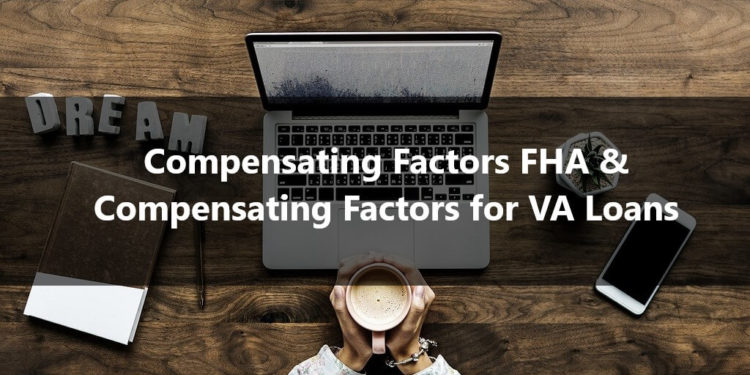Compensating Factors FHA & Compensating Factors for VA Loans
Looking for a mortgage company that does manual underwriting for FHA and VA loans? Some lenders will deny a loan because they will not manually underwrite a loan. Lenders may have an overlay, an internal rule on top of guidelines, which can make qualifying for a mortgage more difficult.
Manual Underwriting Explained
The Automated Underwriting System (AUS) analyzes credit, capacity, and collateral, which results in a logic-based loan decision. There are factors that can trigger a manual underwrite and even when there are approved findings, a loan can be downgraded to a manual underwrite. A lender will either dismiss a borrower because they do not do manual underwrites or inform them that they should look for other options.
Every borrower’s situation is unique and is based on a case by case scenario, but manual underwritten loans can overcome by properly pre-approving a borrower and structuring a loan before it is submitted to underwriting. It is important to take the time to provide as much information as possible to your Loan Originator before shopping for a home.
Compensating Factors Explained
Compensating factors for manual underwriting are:
- Just another way for lenders to layer risks.
- Recognize justification for manual underwrites.
- To demonstrate a borrower’s ability to repay the mortgage.
There are compensating factors for VA loans and compensating factors for FHA loans.
Compensating Factors for VA Loans
Factors that are compensating affect the manual VA loan decision, but will not compensate for unsatisfactory credit. The max debt-to-income ratio is 41% but can go higher with compensating factors for VA loans.
12 Factors for Approving Higher Debt-to-Income – VA
A list of compensating factors for VA loans, but not limited to:
- Payments for housing expenses – being able to demonstrate the ability to pay housing expenses greater or equal to the proposed mortgage payment for the past 12-24 months.
- Down payment – making a larger down payment towards the purchase.
- Savings – demonstrating the ability to save and conservative overusing credit.
- Cash reserves – having documented cash, funds, or assets such as a retirement account that allow withdrawals.
- Potential increased earnings – depending on job training or education, the potential increase in earnings.
- Nontaxable income.
- Income or compensation that is not reflected as effective income – received documented compensation or income that may affect the ability to pay the mortgage, such as food stamps or other similar benefits.
- Prior credit history – previous credit history that shows the ability to apply a greater portion towards housing expenses.
- Minimal debt.
- Being employed long-term.
- Benefits from the military.
- Residual income.
One factor that causes a loan to require manual underwriting is borrowers with non-traditional credit – a minimum of 3 trade lines with 12 month rating are required.
Manual Underwriting FHA – Compensating Factors FHA
The minimum down payment for an FHA loan is:
- 3.5% for a 580 or higher FICO credit score.
- 10% for borrowers below 580 credit score.
- Regardless of compensating factors for manual underwriting.
When a FHA loan is manually underwritten, the max debt-to-income ratio is 43% without compensating factors. Reserve requirement for FHA manually underwritten loans are 1 month reserves for 1-2 unit properties and 3 months reserves for 3-4 units.
5 Factors for Approving Higher Debt-to-Income Ratios – FHA
Some examples of compensating factors for FHA loans, but not limited to:
- Borrowers with 580 FICO credit score or below may not exceed ratios of 31/43, unless energy efficient can stretch to 33/45.
- Reserves – 3 months reserves for 1-2 units and 6 months for 3-4 units.
- No payment shock – mortgage payment is not more than $100 or 5% higher than the previous housing payment.
- Residual income.
- Additional income that is not considered effective income.
Manual Underwritten FHA Loans and Debt-to-Income Ratios
- Non-traditional credit and below 580 FICO max debt-to-income is 31/43 or 33/45 for energy efficient purchases.
- No compensating factors and 580 FICO plus max debt-to-income is 31/43.
- One compensating factor and 580 FICO plus max debt-to-income is 37/47.
- Two compensating factors and 580 FICO plus max debt-to-income is 40/50.
- No discretionary debt and 580 FICO plus max debt-to-income is 40/40.
With compensating factors FHA, a borrower can go up to 50% debt-to-income ratio. FHA refer-eligible findings by AUS can be triggered due to non-traditional credit or other reasons.
Manual Underwriting Process
There is not a big difference when it comes to the process of underwriting a manual underwrite. In most cases, manual underwriting for FHA loans will require more documentation and underwriter typically will have more remarks versus automated approvals. Depending on the lender, they may have an internal guideline that will not allow manual underwrites or require a specific credit score.
The best way to find out if you qualify or are in need of a manual underwrite, is to go through the pre-approval process.




